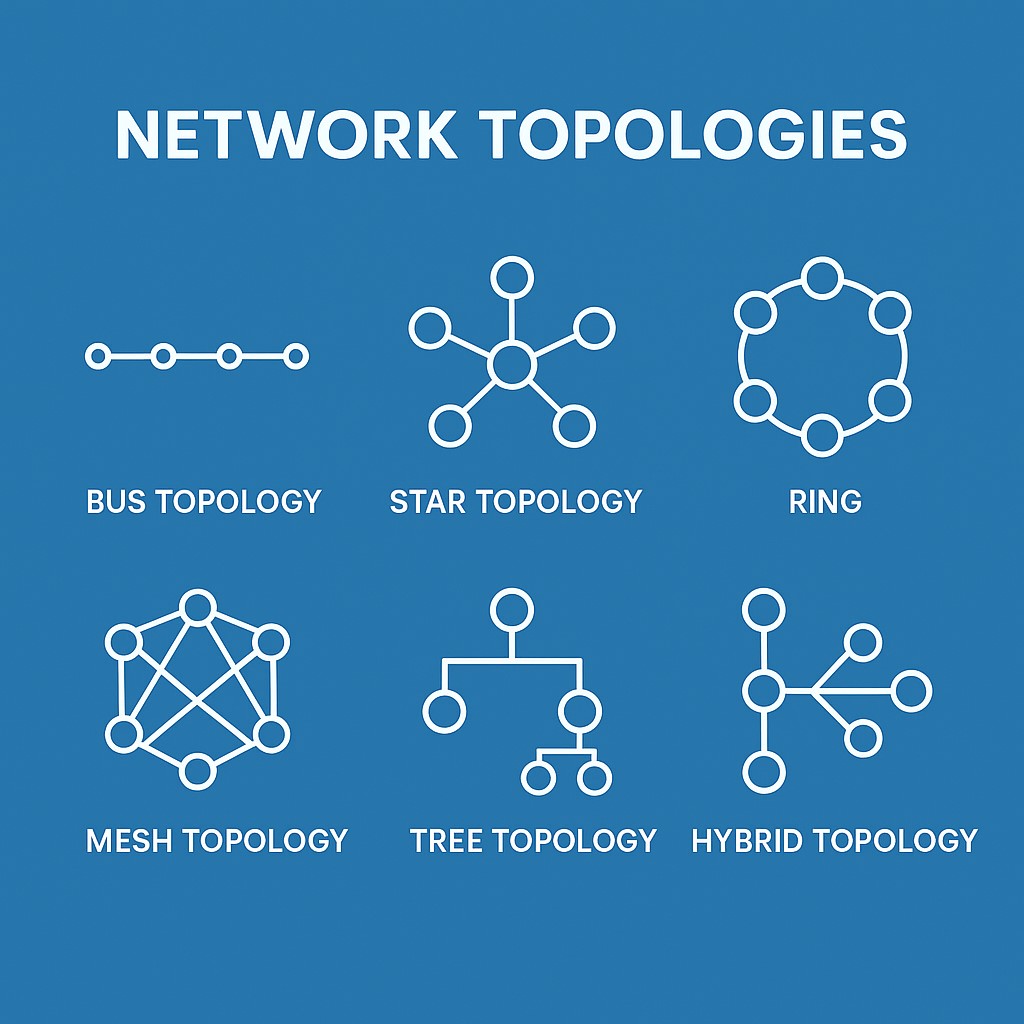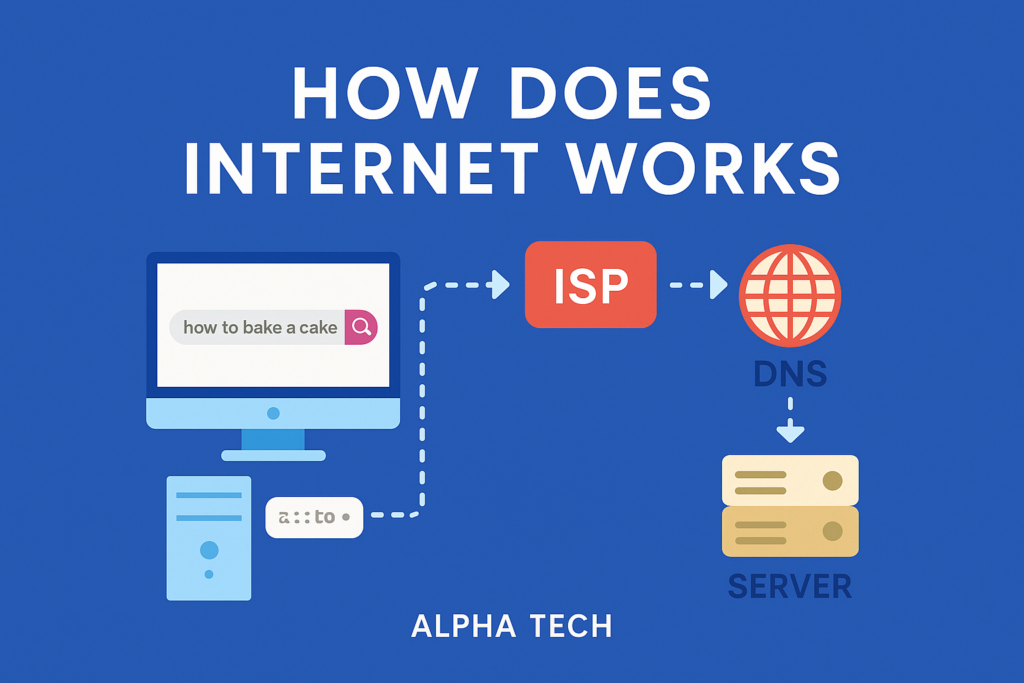Introduction
Network Topology => In today’s connected world, computer networks are the backbone of communication. But did you ever wonder how these networks are physically or logically arranged? That’s where network topology comes into play.
👉 What is a Network Topology?
A network topology refers to the structure or layout of how computers, cables, switches, and routers are connected in a network. It defines the way data flows and how each device communicates with the others.
📌 Why Understanding Network Topologies is Important
Knowing about different topologies helps:
- Improve network performance
- Choose the right layout for your needs
- Reduce downtime and troubleshooting time
- Save costs in design and maintenance
Whether you’re a student, IT professional, or just curious, learning network topologies is key to understanding how the internet and local networks actually work.
🔍 What You’ll Learn in This Blog
In this blog post, we’ll explore:
- Different types of network topologies (like bus, star, ring, mesh, etc.)
- Their advantages and disadvantages
- Real-life examples
- A helpful comparison table to pick the best one
Let’s simplify networking — one topology at a time!
What is Network Topology?
In simple terms, network topology is the arrangement of devices (like computers, routers, switches) in a network. It shows how these devices are connected and how data flows between them.
Just like a city map shows how roads connect buildings, a network topology shows how cables and signals connect devices.
📘 Two Main Types of Network Topologies:
✅ 1. Physical Topology
- Describes the actual layout of wires, cables, and hardware.
- Example: How devices are physically placed and linked.
✅ 2. Logical Topology
- Describes the flow of data within the network, regardless of its physical design.
- Example: Even if devices are connected in a star pattern, data may flow like a ring.
differnece between physical topology and logical topology
💡 Why It Matters:
Choosing the right topology affects:
- Speed of data transfer
- Network cost and maintenance
- Ease of adding or removing devices
- Troubleshooting and network performance
🧠 Example Analogy:
Think of a school classroom:
Logical topology = how they pass notes (data) between each other
Physical topology = where students are sitting
Types Of Network Topologies
There are several ways to arrange devices in a network. Each network topology has its own structure, strengths, weaknesses, and ideal use cases. Let’s explore the six most common types of topologies in networking.
✅ Bus network Topology
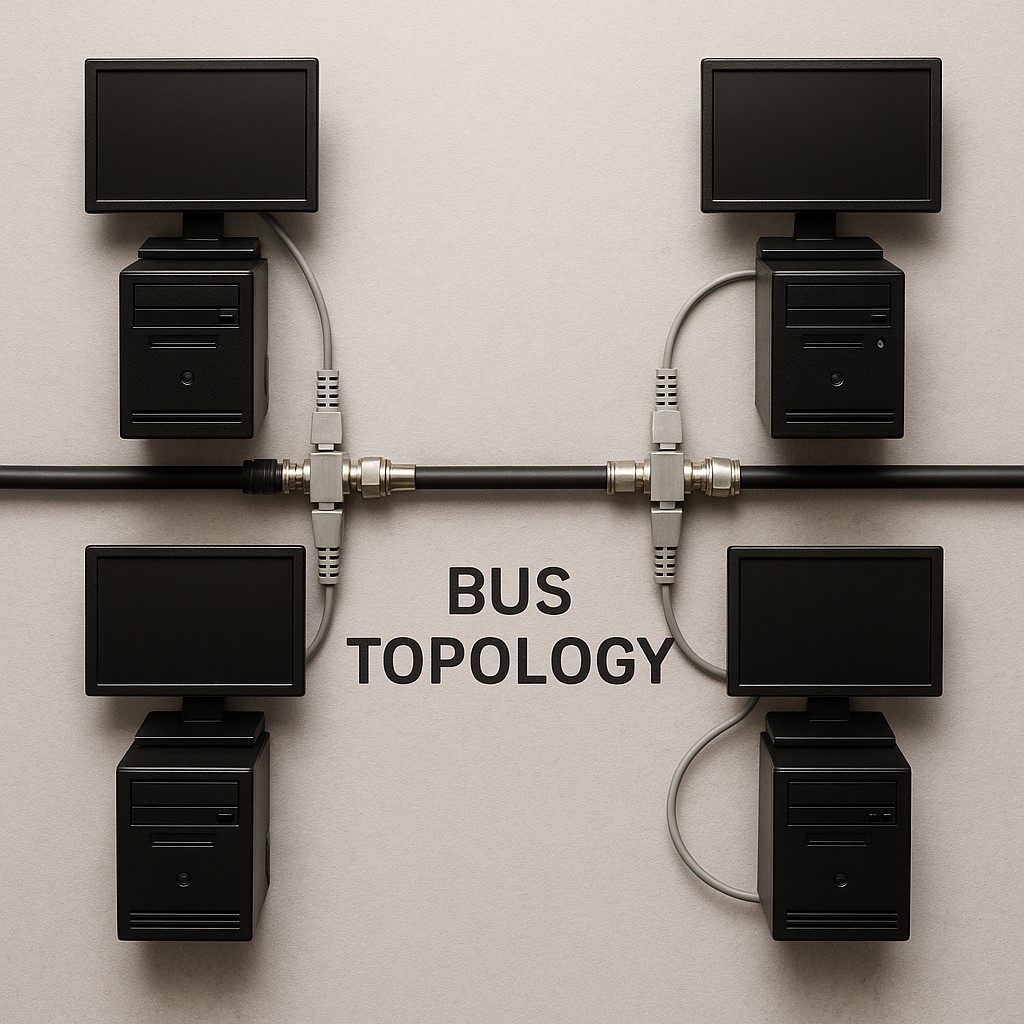
Structure:
All devices are connected to a single central cable (called a backbone).
Advantages:
- Easy to set up
- Low cost
- Requires less cable
Disadvantages:
- If the main cable fails, the entire network goes down
- Slow when traffic increases
- Difficult to troubleshoot
Best For:
Small office or temporary networks
✅ Star network Topology
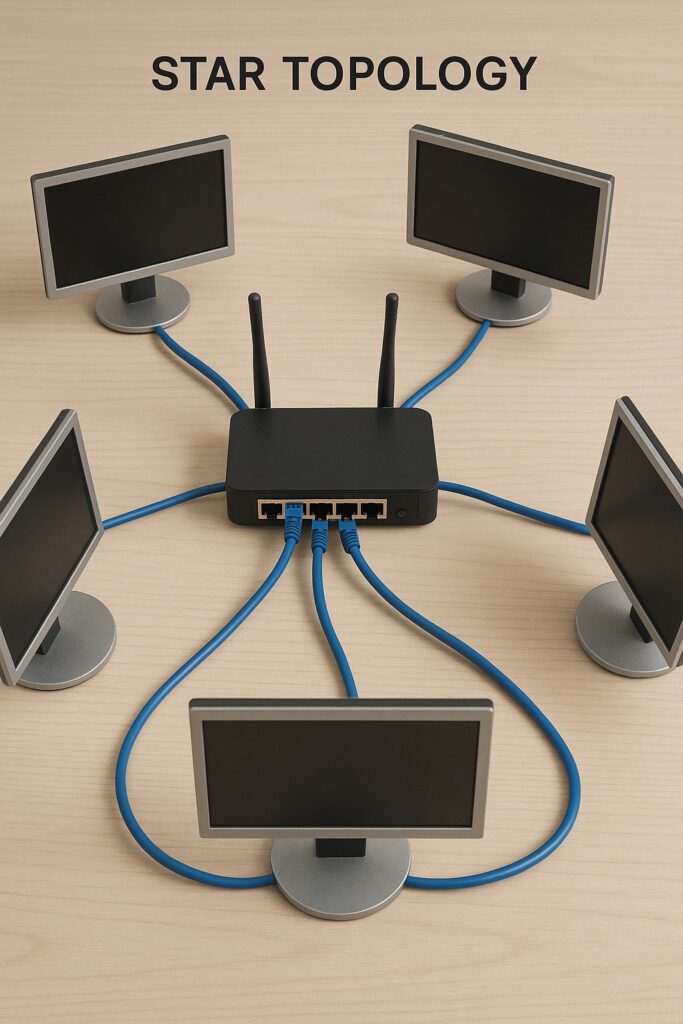
Structure:
All devices are connected to a central hub or switch.
Advantages:
- Easy to manage and troubleshoot
- One device failure doesn’t affect the rest
- High performance with modern switches
Disadvantages:
- If the central hub fails, the whole network stops working
- Requires more cable than bus topology
Best For:
Home networks, offices, and schools
✅ Ring network Topology
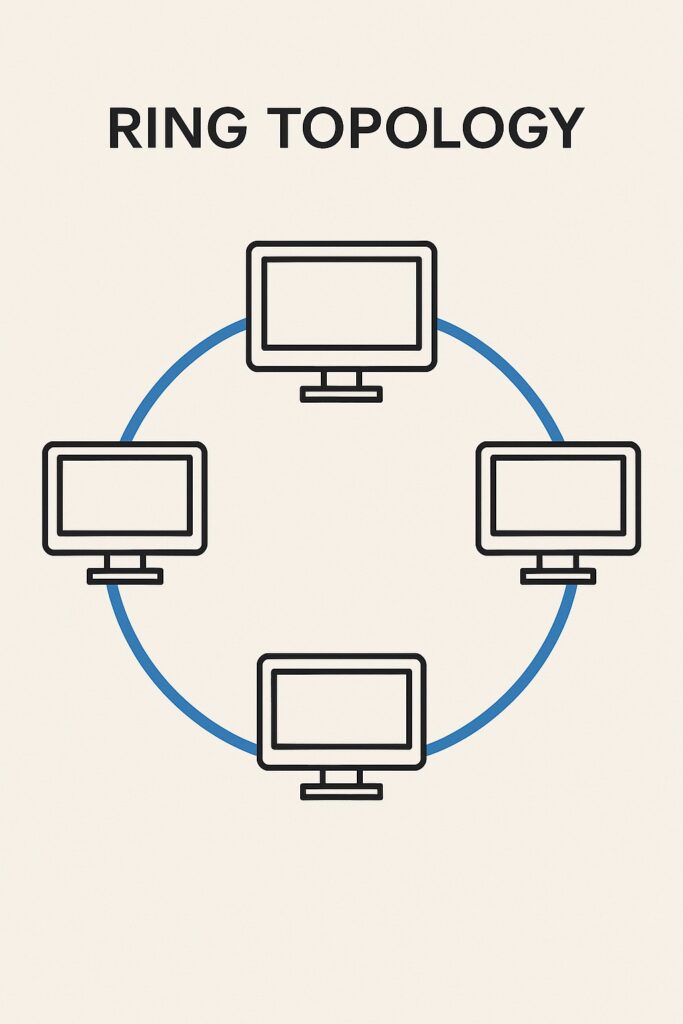
Structure:
Devices are connected in a circular pattern, forming a closed loop.
Advantages:
- Data travels in one direction, reducing collisions
- Equal access to all devices
Disadvantages:
- One device or cable failure can affect the entire network
- Harder to install and maintain
Best For:
Some LANs and older school or college networks
✅ Mesh network Topology
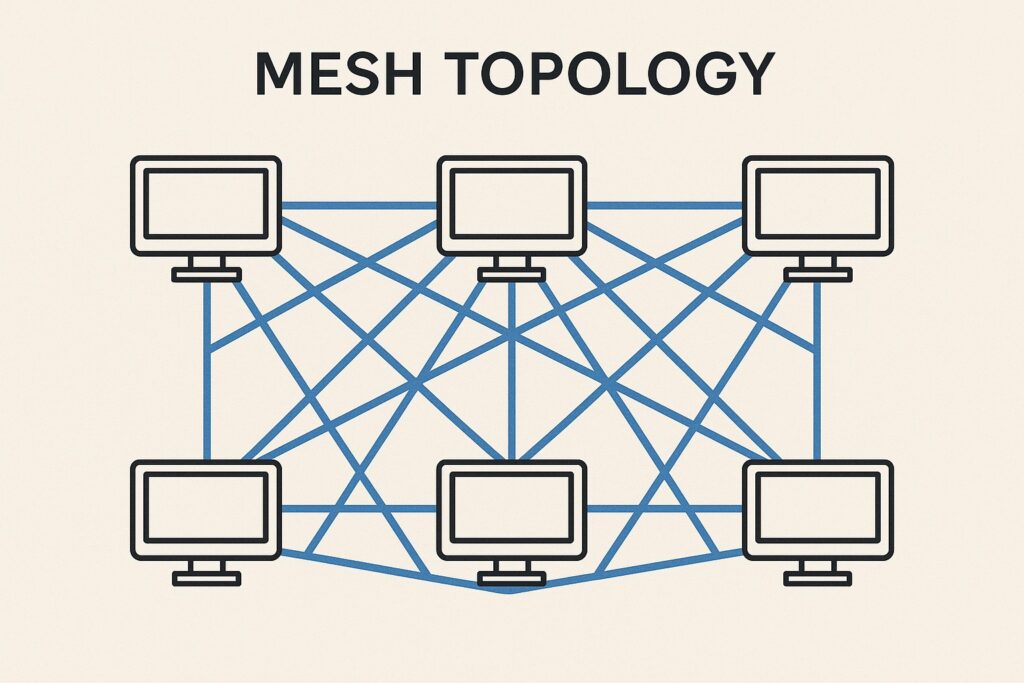
Structure:
Every device is connected to every other device directly.
Advantages:
- Very reliable — if one path fails, data takes another
- High performance and security
Disadvantages:
- Expensive to install
- Complex wiring and configuration
Best For:
Military systems, critical business operations, data centers
✅ Tree network Topology
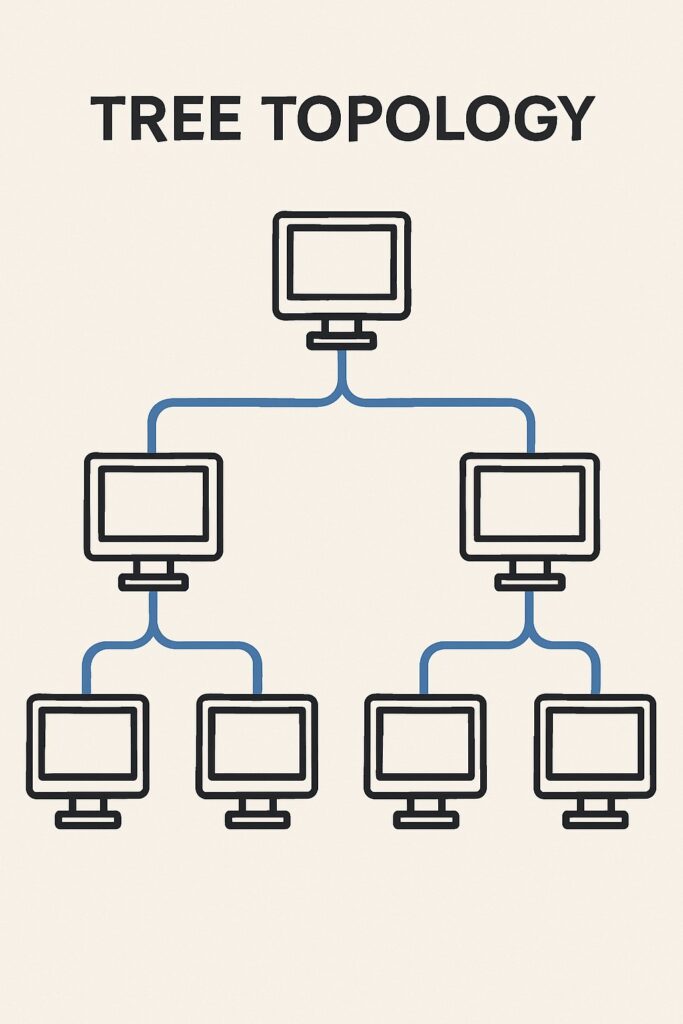
Structure:
Combination of star and bus topology. Devices are grouped in star networks and then connected using a bus layout.
Advantages:
- Scalable and flexible
- Easy to manage large networks
Disadvantages:
- If the backbone fails, all connected groups go down
- More complex than basic topologies
Best For:
Large organizations and university campuses
✅ Hybrid Topology
Structure:
Mix of two or more topologies to suit complex network needs.
Advantages:
- Highly flexible and scalable
- Can be designed to meet specific needs
Disadvantages:
- High cost
- Complex to design and manage
Best For:
ISPs, telecom companies, large enterprise networks
Comparison Table of Different Network Topologies
To help you quickly understand the differences between each topology, here’s a comparison based on key factors like structure, cost, scalability, reliability, and more.
| Topology | Structure | Cost | Reliability | Scalability | Ease of Troubleshooting |
|---|---|---|---|---|---|
| Bus | Single central cable (backbone) | Low | Low (cable failure affects all) | Poor | Difficult |
| Star | All devices connected to a hub | Moderate | Moderate (hub is a single point of failure) | Good | Easy |
| Ring | Devices connected in a circular loop | Moderate | Low (failure affects whole network) | Poor | Moderate |
| Mesh | Every device connected to all others | High | Very High | Excellent | Complex |
| Tree | Grouped stars connected by a bus | High | Moderate | Excellent | Moderate |
| Hybrid | Combination of two or more types | Very High | High | Excellent | Complex |
✅ Quick Tips:
- Choose Bus for simple, small networks.
- Use Star for most modern home and office setups.
- Opt for Mesh or Hybrid for large-scale or high-security systems.
- Consider Tree if your network is growing and needs structure.
6. Real-World Examples and Use Cases
Understanding how network topologies are used in the real world helps connect theory with practical applications. Below are common examples of each topology in action:
✅ Bus Topology – Small Office Networks
Use Case:
In small offices or temporary setups (like exhibitions), bus topology is often used due to its low cost and simple layout.
Example:
An internet café with 5–6 computers connected using a single coaxial cable.
✅ Star Topology – Home & Corporate Networks
Use Case:
This is the most widely used topology in modern homes, schools, and offices because it’s easy to manage and scale.
Example:
Wi-Fi router at home acting as a hub and connecting multiple devices like phones, TVs, and laptops.
✅ Ring Topology – Old Campus Networks
Use Case:
Ring topology was used in older college campuses or buildings where the data flow was predictable.
Example:
Legacy fiber-optic token ring networks in universities.
✅ Mesh Topology – Military & Data Centers
Use Case:
In high-security or mission-critical environments, mesh topology is preferred due to redundancy and zero downtime.
Example:
Military communication systems or Google data centers where reliable, uninterrupted connectivity is essential.
✅ Tree Topology – University Campuses
Use Case:
Best suited for hierarchical networks, like university campuses where different departments need their own sub-networks.
Example:
A college with individual buildings (like Admin, Library, Labs) each in star topology, all connected by a central backbone.
✅ Hybrid Topology – Telecom & ISPs
Use Case:
Large telecom companies and Internet Service Providers (ISPs) often use hybrid topology to combine flexibility and performance.
Example:
A mix of star, mesh, and tree topologies used by companies like Airtel or Jio to manage millions of users efficiently.
Conclusion
Understanding network topologies is a key step in building, managing, and troubleshooting any computer network. Whether you’re designing a small home setup or a large-scale enterprise network, the right topology helps improve speed, reliability, and scalability.
📝 Key Takeaways:
- Network topology is all about how devices are arranged and how data flows.
- Each type — Bus, Star, Ring, Mesh, Tree, and Hybrid — has its own pros and cons.
- Your choice depends on budget, network size, reliability needs, and future scalability.
- Real-world use cases show how topologies work in action — from homes to telecom giants.
👉 Whether you’re a student, network engineer, or tech enthusiast, having a good grasp of these topologies will help you build smarter and more efficient networks.

